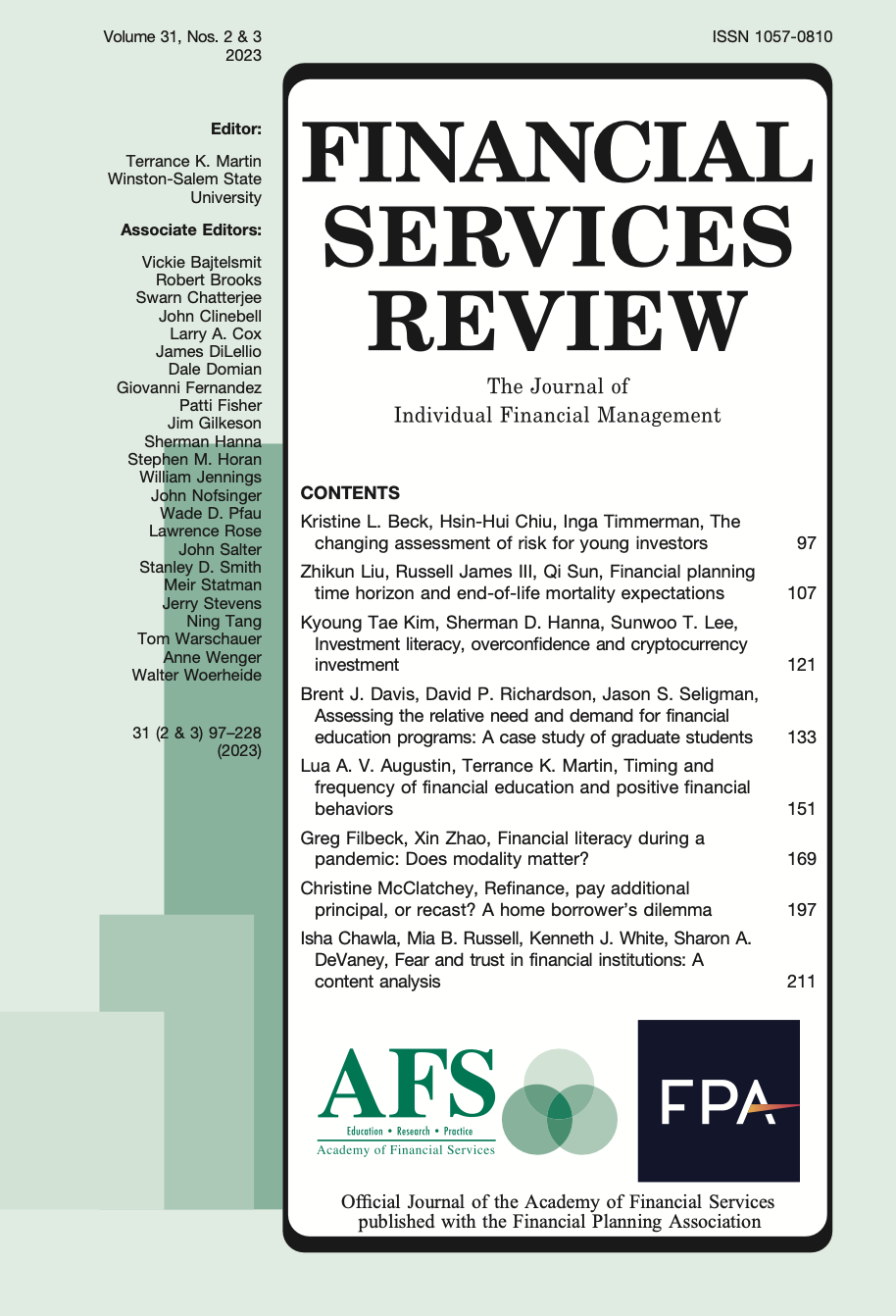Assessing the relative need and demand for financial education programs
A case study of graduate students
DOI:
https://doi.org/10.61190/fsr.v31i2/3.3531Keywords:
Overconfidence, Financial literacy, Financial educationAbstract
We measure the relative need and demand for financial education programs among graduate stu- dents at a large university system. We find that self-assessed and measured financial literacy is sig- nificantly related to interest and demand for financial education. Individuals who self-report a high level of financial literacy but have low measured financial literacy are significantly less likely to be interested in financial education, while the opposite is true for financially literate individuals self- reporting a low level of financial literacy. Our study adds to research showing the importance of both believed and actual financial literacy measures and has implications for financial education programs.
Downloads
Published
How to Cite
Issue
Section
License
Copyright (c) 2023 Brent J. Davis, David P. Richardson, Jason S. Seligman

This work is licensed under a Creative Commons Attribution-NonCommercial 4.0 International License.
Author(s) retain copyright and grant the Journal right of first publication with the work simultaneously licensed under a Creative Commons Attribution-NonCommercial 4.0 International License that allows to share the work with an acknowledgment of the work's authorship and initial publication in this Journal.
This license allows the author to remix, tweak, and build upon the original work non-commercially. The new work(s) must be non-commercial and acknowledge the original work.


